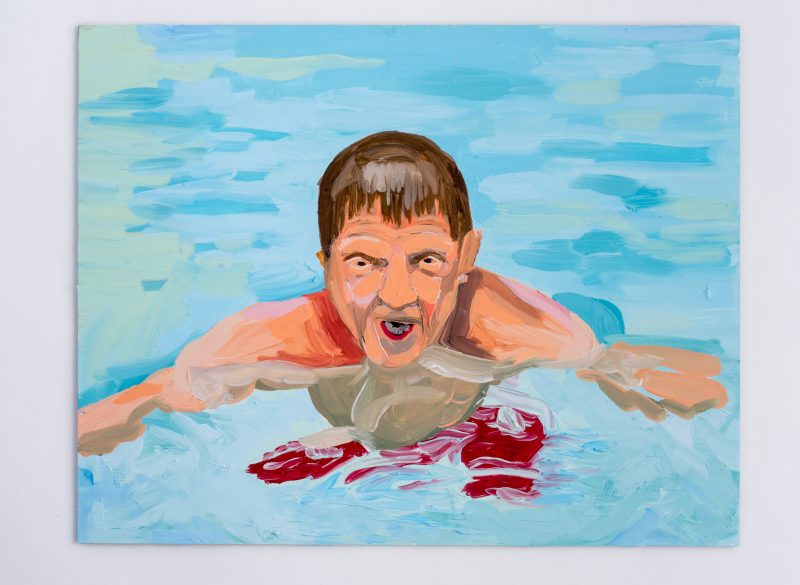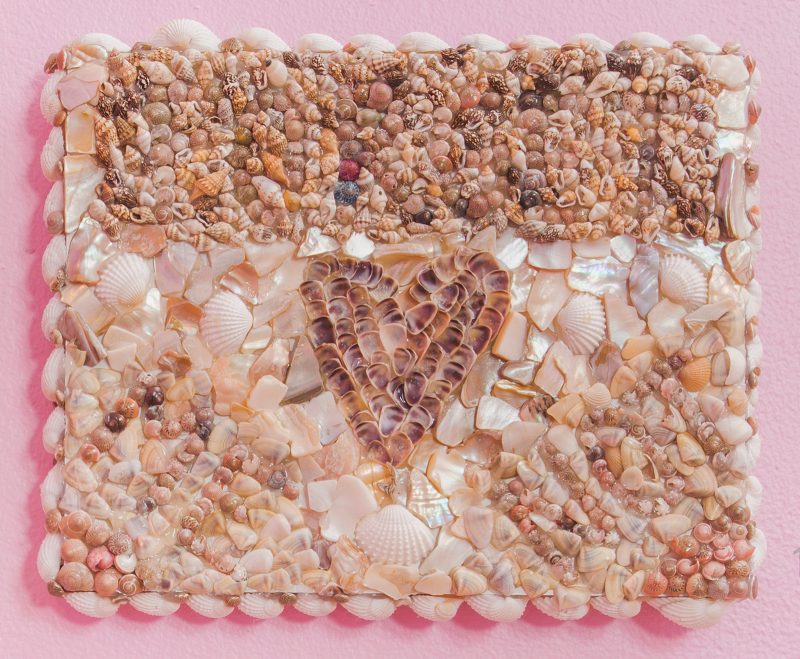
I recently read an article about the Mediterranean Sea in The Atlantic called “History’s Greatest Sea is Dying.” by Peter Schwartzstein. In it, Schwartzstein narrates the Mediterranean’s past as a trade hub, a site of natural glory, and its mythological importance before tracing its accelerating decline through pollution, its coastline choked by garbage. I was reminded of the deep and powerful beauty of seas, of oceans, of lagoons, and how their once seeming omnipotence has been so easily compromised by human abuse. What I found most unsettling was how the sea’s physical reality as an immense volume of water was constantly oscillating and shrinking in magnitude according to people’s shifting cultural evaluations–from a god to dump.
Stephanie Kantor’s new exhibition at the Clay Studio, Rosewater, is a potent reflection of the ocean’s many roles both modern and ancient, sublime and trivial. Even the show’s namesake, rosewater, offers multiplied utility as a cosmetic product, food flavoring, medicinal use, and ritual tool. Showcasing several different techniques, Kantor equalizes references as varied as the shellcraft of sailor’s valentines, salvaged shipwreck treasures, seafood, beach town craft, healing waters, and vague legends. If they all carry a common theme, it is of respect for the ocean’s creative capacity as a place of preservation, production, and nourishment.
With its walls painted pink, the space is reminiscent of a cheery souvenir store. With the exception of a few pieces, most of the ceramic objects are in large gatherings on pedestals and arranged rather haphazardly. Slip cast shells in various hues scattered amongst them propose seashores–or else imitate the naive decorations of a beachfront shop. Mounted on the walls, shellcraft, ceramic miniature figurines, and compact paintings further the illusion of such an establishment, creating a quaint atmosphere.
With the impressionistic four sailor’s valentines, the artist imbues them with a contemporary humor and childlike longing; words dissolve as the viewer approaches into skin tones reminiscent of a long-lost lover’s form. “Forget Me Knot” is the funniest, depicting a pair of heart-stamped panties; it couldn’t be lost on Kantor that these so-called valentines were most likely made by enterprising women capitalizing on sexist romanticism. However, they are rough estimations of the genre’s better work both in terms of resolution and vibrancy and don’t necessarily represent the sensitive labor of the craft.

Better are the ceramic works that showcase Kantor’s skill and imagination as a ceramicist. Vessels and forms run the gamut from amphoras to fused bowls, boat’s ropes, candelabras, lively toy animals, and oyster platters while technicolor glazes and ornaments paint an intense sensory fantasy of the ocean: of pearly corals, creeping algae, pebbly barnacles, crusts of salt. Of these works, “Oyster Plates #1” and “#2” are particular standouts. While most of Kantor’s ceramics are excellent exercises in exaggerated convexities, these plates suggest mass through concave impressions of shells, creating depth on depth like underground pools and imparting a sudden wistfulness. While Kantor recreates manmade things, her aquatic interpretations reads as a testament of how the ocean itself can act as artist; it changes the surface of long-submerged artifacts, calcifies objects together, and smooths surfaces over time by its waves. Altogether, these works are a powerful representation of the ocean’s vitality–read in this way, the toy figurines form a parade of marine biology.
Separate are a cluster of works more restrained in color if not structure and harken to more ancient and classical sources: three verdigris artifacts in vitrines as if drawn from a shipwreck; a fountain, “Water Well,” one would see in a Mediterranean villa; the cypher of the ultramarine face of Siren. The largest work, “Man Eating Clam,” bone white and imposing, displays a handprint of some misfortunate thief grazing its enthroned pearl. Together, they emerge as an index of the oceans’ many stories, legends, and histories that have inspired art throughout time. Juxtaposing them with the sailor’s valentines and colorful wares, Kantor invites viewers to draw comparisons in form and narrative between these categories of sea-related art, while blurring the line between tasteful and tacky with a question: what if some of these older, more revered works are just preserved and purified versions of ancient knicknacks? What are the stories and traditions to be gleaned behind the counter of a beach shack?
Kantor’s paintings of what she deems ‘Men Seeking the Fountain of Youth’ distills these ideas of preservation and purification the most by introducing humans into the frame. Based on photos sourced from the internet, the paintings are a record of a record of men submerged in healing waters both fresh and saltwater. The paintings affect a wetness that manages to be both slick and blurry, infusing the images with their subjects’s vague anxiety and hope. Often the paintings show the man frontward, forcing an intimacy between the viewer and the subject, who faces mortality in both aging and his vulnerability in the water. There is a multilayered irony to these paintings–that these people believe they can be preserved the way clay and metal can be in water, a petrifying process destructive to flesh and bone. That despite all environmental destruction done, a man means nothing alone in the sea. Compared to the other three-dimensional works, the men are doubly flattened and weakened. But if not in the water, in art these men can be frozen in time.










